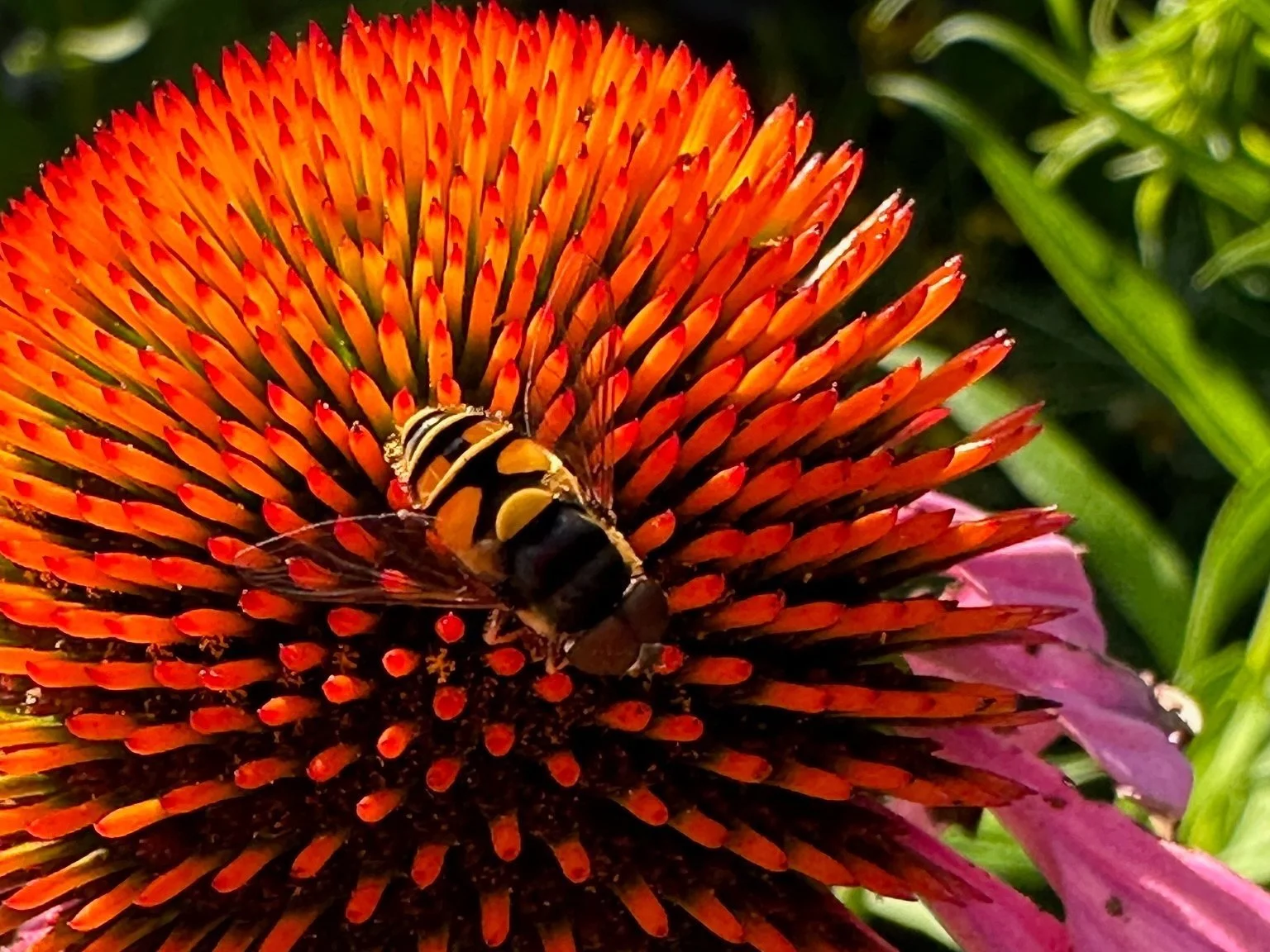Who Pollinates My Vegetables?
Goldenrod buzzing with pollinators and beneficial insects in the fall
Discovering the Wonders of Pollinators
Pollinators are truly fascinating creatures. Once you begin to understand their vital roles, you'll find joy in observing them at work in your garden. Knowing which pollinators support the growth of specific vegetables and fruits is essential for creating a thriving ecosystem tailored to their needs.
Did you know that some bees specialize in a single type of plant? For example, Squash Bees (Peponapis pruinosa) are indispensable for the reproductive success of cucurbit crops. These native pollinators are uniquely adapted to the flowers of pumpkins, gourds, and squashes, relying almost exclusively on their pollen to feed their young. This specialization has earned them the name "squash bees."
Squash bees' life cycles align perfectly with the flowering seasons of cucurbit plants. Spending most of their lives as pre-pupae in underground nests, these bees emerge as adults in June or July, depending on the region. While squash pollen is their primary food source, they may occasionally seek nectar from other flowers if squash blossoms are scarce.
The Art of Buzz Pollination
Some pollinators, like bumblebees, employ an ingenious technique called "buzz pollination" (or sonication) to access tightly held pollen. By vibrating their flight muscles while gripping a flower, they produce a characteristic "buzz," which shakes the pollen loose from the plant's tube-like anthers.
This technique is crucial for certain vegetables and fruits that depend on buzz pollination for optimal growth. Some examples include:
Vegetables:
Tomatoes (including cherry and larger varieties)
Peppers (sweet and hot)
Eggplants
Fruits:
Blueberries: Many varieties rely on buzz pollination for full fruit development.
Cranberries: Bumblebees and other buzz pollinators enhance fruit set.
Kiwi (Actinidia): Certain species depend on buzz pollinators, especially in native habitats.
Encouraging buzz pollinators in your area can significantly improve yields and plant health.
Key Buzz Pollinators
Bumblebees: The most renowned and efficient buzz pollinators.
Solitary bees: Including species like carpenter bees and certain native bees.
Tropical stingless bees: Tiny but powerful contributors to pollination.
Examples of native buzz pollinators in Ontario, Canada
In Ontario, native bees play a crucial role in pollinating local plants:
Bumblebees (Bombus): These are some of the most common and important buzz pollinators in Ontario. They're essential for both wild plants and agricultural crops like tomatoes, blueberries, and peppers.
Carpenter bees: These solitary bees specialize in robust flowers, using their buzzing to great effect. They use buzz pollination and contribute to pollination in gardens.
Sweat bees (Halictidae): These ground-nesting bees are widespread across Ontario. Some species are known for their buzzing capabilities and support pollination for a variety of crops and native plants.
Flies: The Unsung Pollinators
Flies, too, have their place in pollination! Hoverflies (Syrphidae) and blowflies (Calliphoridae) are particularly effective for crops such as:
Vegetables: Carrots, onions, broccoli.
Fruits: Strawberries, raspberries, blackberries.
Even cacao (for chocolate production!).
Flies are drawn to flowers for nectar and unintentionally carry pollen as they move, making them valuable allies in maintaining biodiversity and supporting crop production.






